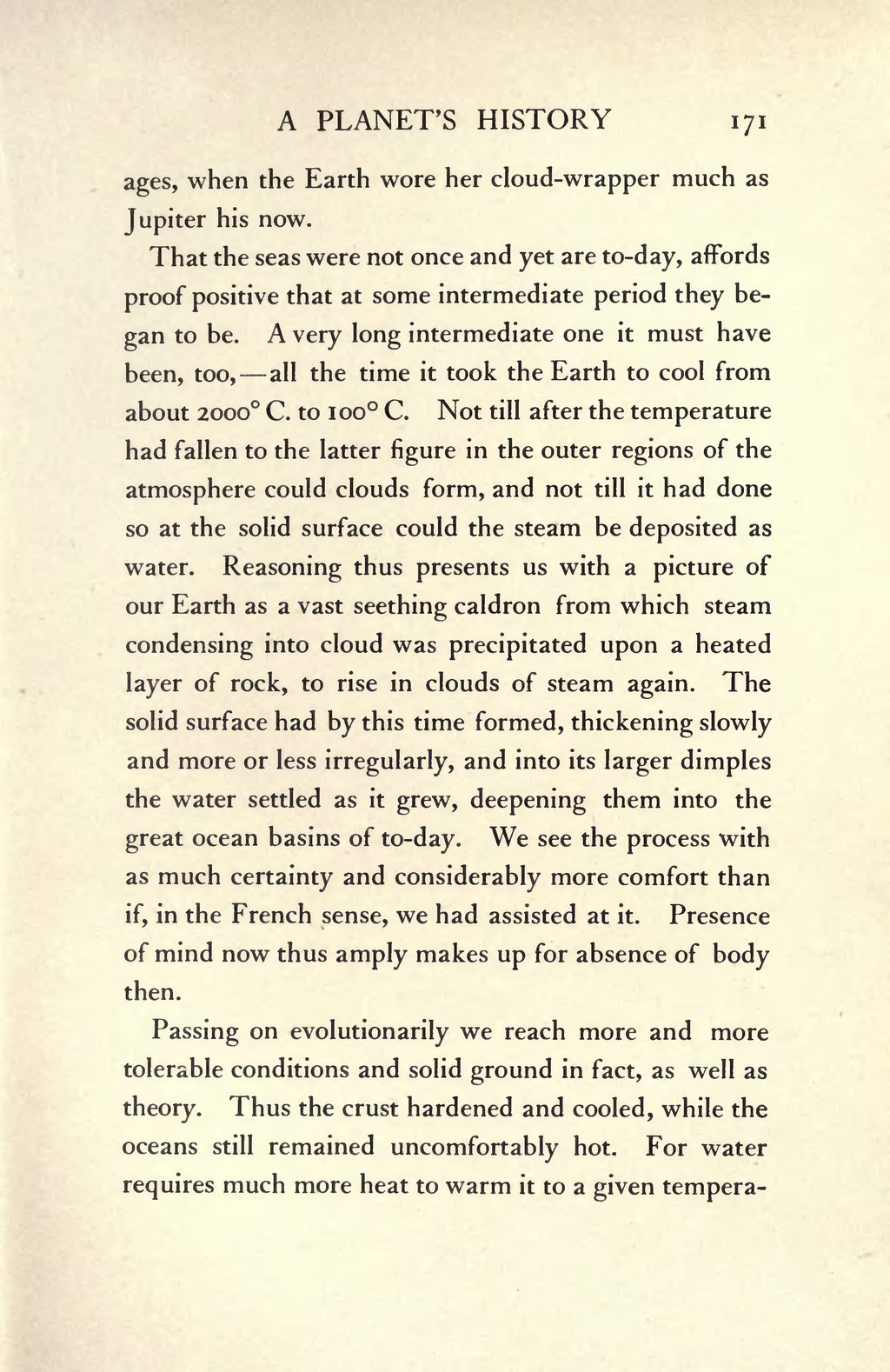ages, when the Earth wore her cloud-wrapper much as Jupiter his now.
That the seas were not once and yet are to-day, affords proof positive that at some intermediate period they began to be. A very long intermediate one it must have been, too,—all the time it took the Earth to cool from about 2000°C. to 100°C. Not till after the temperature had fallen to the latter figure in the outer regions of the atmosphere could clouds form, and not till it had done so at the solid surface could the steam be deposited as water. Reasoning thus presents us with a picture of our Earth as a vast seething caldron from which steam condensing into cloud was precipitated upon a heated layer of rock, to rise in clouds of steam again. The solid surface had by this time formed, thickening slowly and more or less irregularly, and into its larger dimples the water settled as it grew, deepening them into the great ocean basins of to-day. We see the process with as much certainty and considerably more comfort than if, in the French sense, we had assisted at it. Presence of mind now thus amply makes up for absence of body then.
Passing on evolutionary we reach more and more tolerable conditions and solid ground in fact, as well as theory. Thus the crust hardened and cooled, while the oceans still remained uncomfortably hot. For water requires much more heat to warm it to a given tempera-
